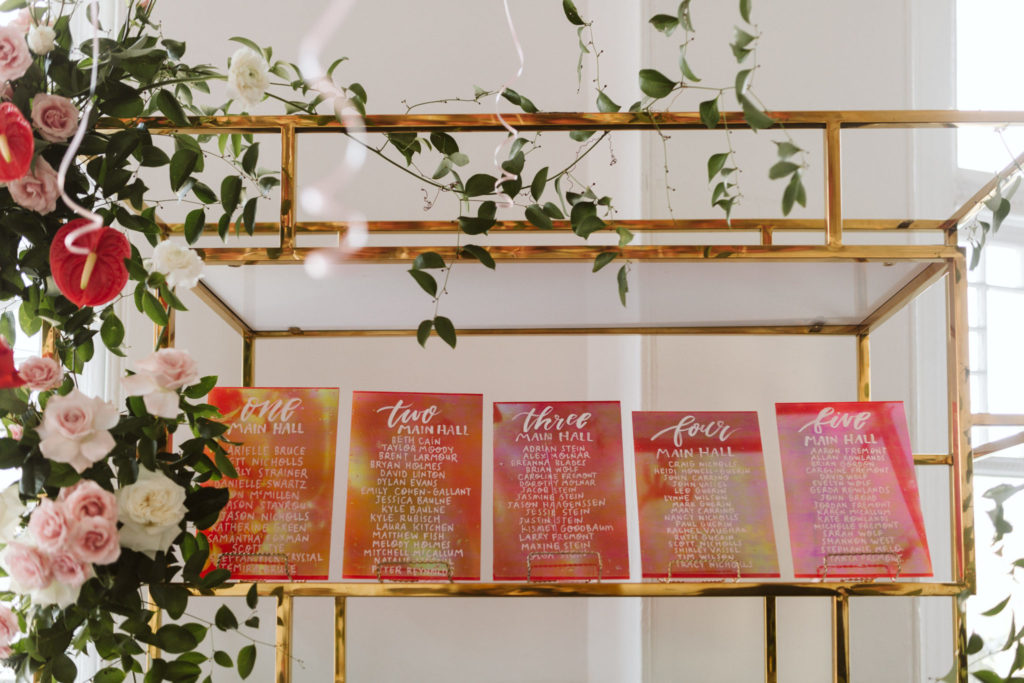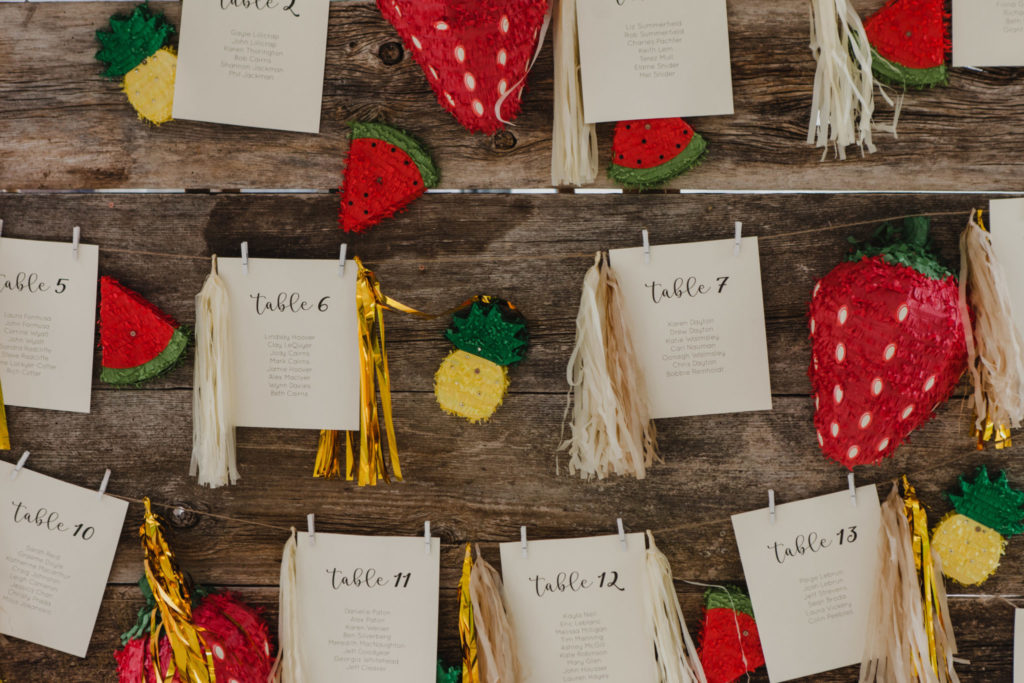When you start planning a wedding, you don’t often anticipate the little to-dos that quickly become stressful, days-long projects. One of those dreaded wedding-planning woes: creating the seating plan. This can be a slippery slope, especially if the families are only meeting for the first time or if there are a lot of out-of-towners. It can also become even more frustrating when family politics start swaying your plans (so-and-so can’t sit with so-and-so). Remember: you can’t accommodate everyone. And besides: once the music starts, no one will be sitting in their seats anyway. Just stick to these seven steadfast rules for making your seating chart and all those guests will fall right into place (literally).

1. Create an easy-to-read seating chart, but have fun.
“A seating chart is an easy way to infuse your personal style or sense of humour into your wedding design,” says planner Lynzie Kent of Love By Lynne. “It’s often one of the first things your guests will encounter at your wedding and can set the tone for how they will be immersed into the décor.”

2. Give easy access to those who need it.
Take note of the washrooms, bar area and accessible entries and exits, and be considerate of guests who would like to be close to these areas.
3. Choose your table shape and chair count.
Will you be having large, round tables? Long rectangular ones? Round tables allow for more conversation, however you’ll need to choose height-appropriate centrepieces that won’t obstruct things. Longer tables are reminiscent of cozy family dinners and usually have a warmer feel, but guests will only be able to converse with those seated next to or in front of them. You can get more creative with long table centrepieces by using both small and large floral arrangements and stagger them or line them up.
4. Keep the head table to wedding party only.
Nix the sweetheart table. You really want to be surrounded by family and friends. The easiest rule: wedding party sits at the head table. Bridesmaids and groomsmen, best man and maid of honour, and bride and groom. Case closed.
5. Make a kids’ table.
Your parent-friends will thank you for it. Give the littles (anyone 10 and under) their own place to eat, make a mess, and have fun with others their own age. Choose kid-friendly foods to serve them (cheese pizza, chicken nuggets, french fries), provide items to keep them busy (colouring pages and crayons, funny props to dress up in, or a basket of glowsticks and accessories), and maybe “hire” your tween-aged nieces to supervise the kiddie tables.

6. Use the reception hall layout as your starting point.
You can’t begin to start mapping out who is going to sit where until you know what you’re working with. What is your wedding venue’s floorplan, and can it be manipulated at all? Like a map, you need the general layout of your hall to start deciding just how many tables will fit. Ask your venue if they have an app that can help you plan.
7. Ignore the naysayers.
Pencil in immediate family sitting together. Then group families as well as similar circles of friends (coworkers, university friends, and so on). And when people complain… ignore it. Seriously – the meal portion of a wedding is such a small amount of time that everyone can just suck it up, buttercup, and sit where they’ve been told.










Leave a Reply